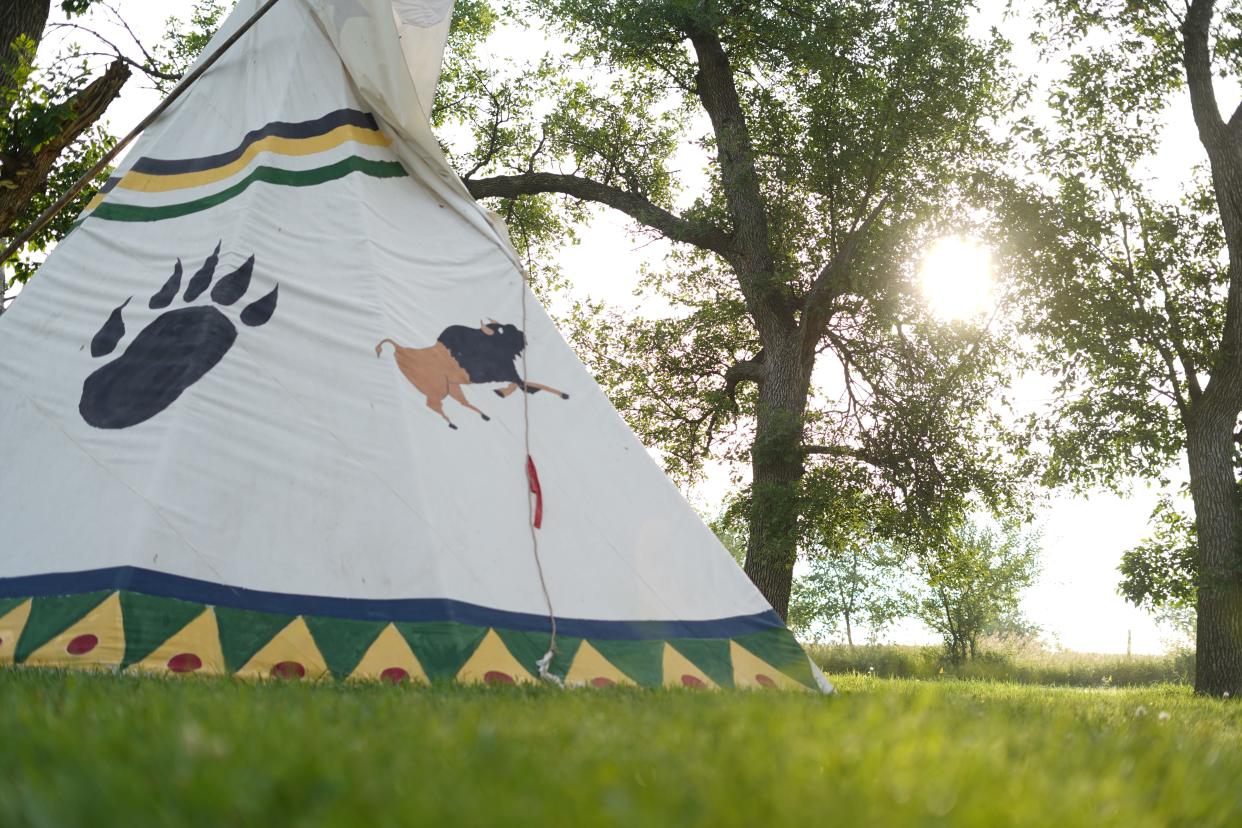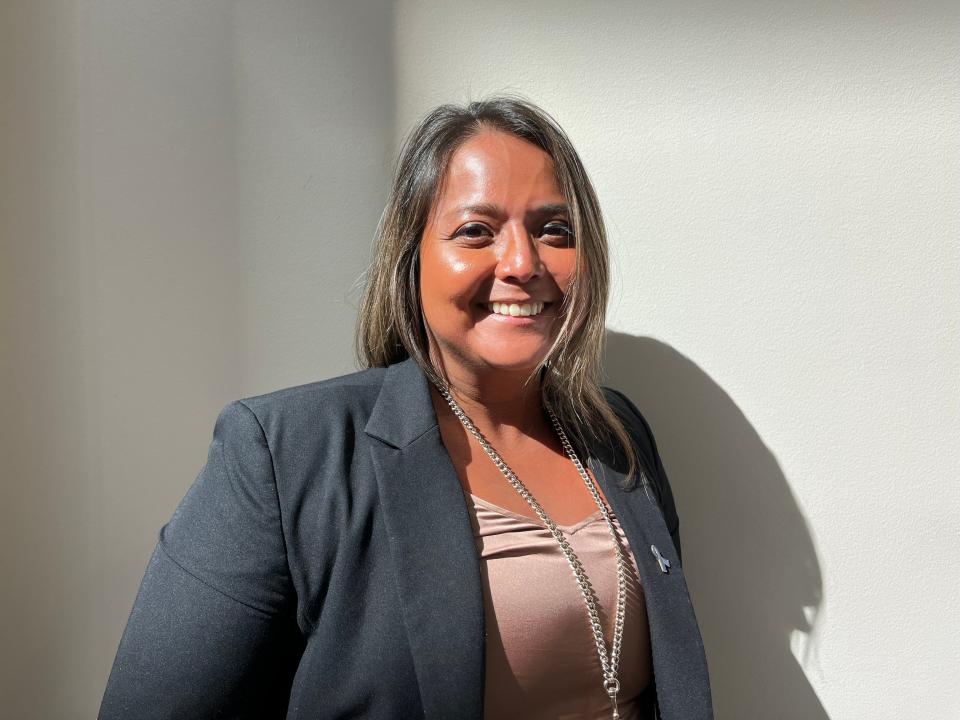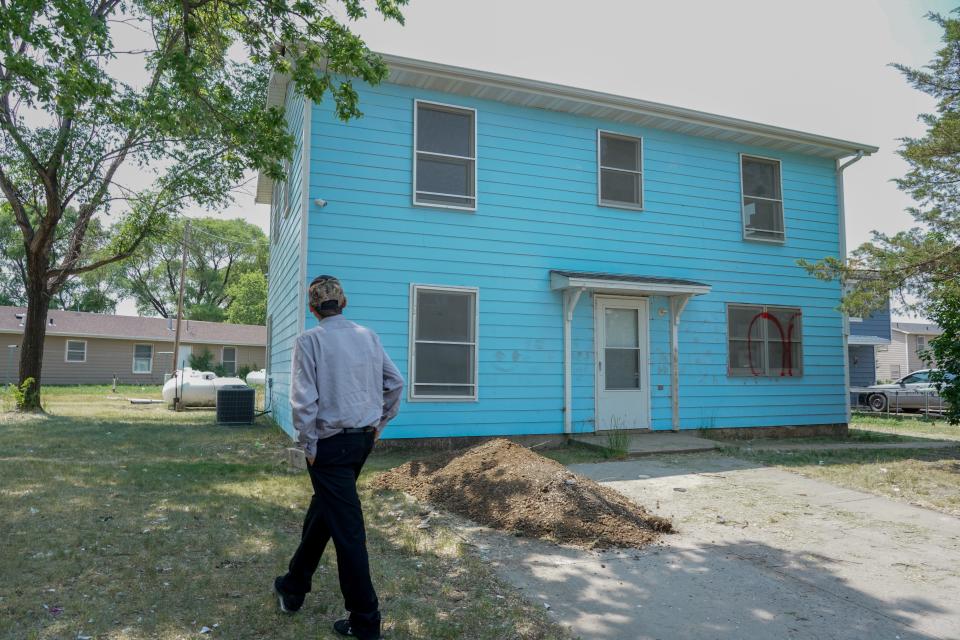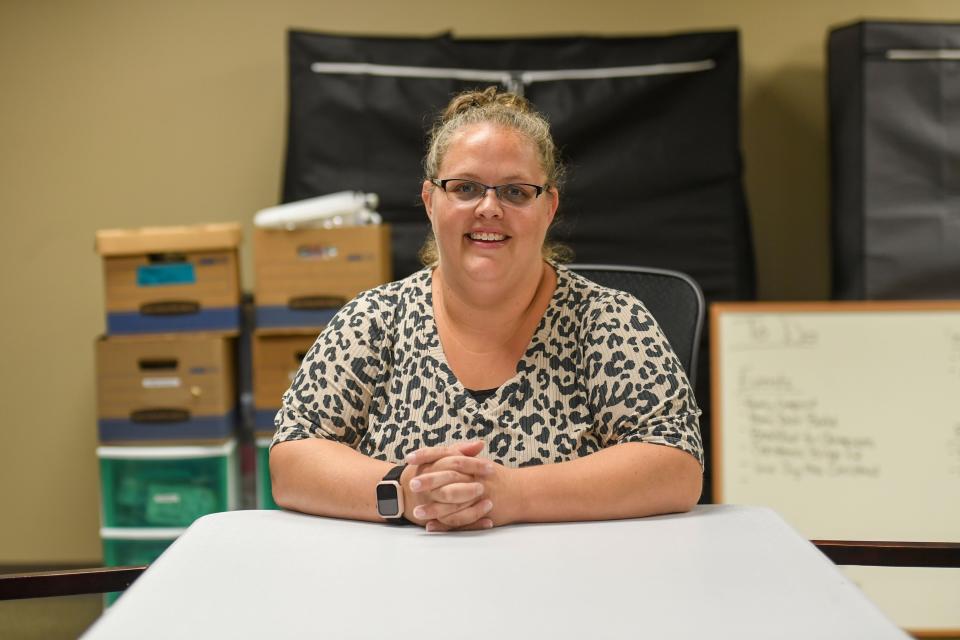What’s being done to address overrepresentation of Native children in SD foster care system

- Oops!Something went wrong.Please try again later.
Editor's note: This is the ninth story in a six-installment series about Native American children in South Dakota's foster care system, produced in partnership between the Argus Leader and South Dakota Searchlight. You can read more on this statewide issue throughout the next two weeks by visiting either the argusleader.com or southdakotasearchlight.com.
South Dakota government officials, tribal leaders, tribal child welfare coordinators, foster families and legislators agree: The overrepresentation of Native American children in the foster care system is a problem.
Indigenous children made up nearly 74% of foster children in the state by mid-2023 — five times the actual representation of Native American children in South Dakota’s population. One in five Native American children in South Dakota are placed into foster care before they turn 18.
Those statistics are symptoms of larger issues, and the removal of children from their familial connections can lead to a cycle: their future children are at a higher risk of ending up in the foster system. The 1978 Indian Child Welfare Act was supposed to fix the problem.
The first step, in nearly every interview conducted by the Argus Leader and South Dakota Searchlight for its nine-part series “The Lost Children,” is to bring all key players to the table to discuss the issue and possible solutions.
Gov. Kristi Noem said she recognizes solving the issue will not just be “a program and a payment,” and the state can’t solve it alone.
"You've got to have prevention and intervention and training and services for when these families have a crisis," Noem said. "By only talking about these kids when they're already in the foster care system, that will do nothing to guarantee that we're not sitting here in 10 years again."
A 2004 task force analyzed South Dakota’s ICWA compliance, setting forth 30 recommendations for the state to implement. Most of the recommendations have been implemented, state officials say. At the time, nearly 60% of children in South Dakota’s child welfare system were Native American.
The share of Native American children in the system had increased to 73.9% as of June 30, 2023.
An effort to establish a new task force to study the issue failed in the Legislature in 2023. The South Dakota ICWA Coalition plans to work with lawmakers to bring the bill back next session, which begins in January.
Noem was critical of the task force bill, saying past recommendations that haven’t been implemented yet are tribal responsibilities. Those responsibilities include:
Recruiting Native American foster homes throughout the state.
Fully staffing and funding ICWA offices to include paralegals and attorneys, as well as fully staffing and funding juvenile and family courts on each reservation.
Creating a brochure to be distributed to families in court explaining the Indian Child Welfare Act and their rights under ICWA.
Regularly informing South Dakota DSS, the attorney general, state’s attorneys and the circuit courts about changes in tribal law regarding child protection issues.
Responding to South Dakota DSS contacts by phone or in writing to prevent perception by DSS or state court that the tribe doesn’t want to participate in pending state court proceedings.
But at the same time, Noem said the state “can take an incredible lead from the tribal governments.”
“Tell us what they need. And don’t just say we need more money,” she said. “We need to be spending money wisely in ways that are really effective. So, boy, we would entertain – and have asked them many times – what more we can do to partner and serve.”

South Dakota ICWA Coalition Director Jessica Morson, who has been in the role for five years, said she has never been contacted by Noem’s office during her tenure. She has not reached out directly to Noem’s office either.
Morson wants to see an audit of ICWA cases over the past few years in South Dakota to ensure the law is being followed. That would be possible through a task force or coalition, she said.
Oglala Sioux Tribe Vice President Alicia Mousseau, a vocal supporter of the task force bill and critic of the Legislature when it failed, said a new task force is necessary to review the 2004 recommendations and collaborate on how to solve root causes of children entering the foster care system.
"If we show our tribal members the state is willing to work with us on helping these kids and these families, then it won't be us against them," Mousseau said. "There's that long history there and that fear is real: needing the safeguard against the state. But we need to change that narrative and we're only going to do that by working together."
OST Task Force
After the task force bill and two other ICWA-related bills failed during the legislative session, Department of Social Services Secretary Matt Althoff, who’d only been on the job a couple of months, offered to open communication with the Oglala Sioux Tribe. Mousseau had helped revive the tribe’s Child Protective Services Task Force in 2022 with goals to address staffing shortages in the tribe’s CPS and ICWA offices and other improvements.
More: Staffing and funding problems leave tribal child welfare offices scrambling
The state DSS leadership team visited Pine Ridge earlier this year. The state and tribe have continued to meet virtually since then, Althoff said.
“We’re committed to meeting mindfully,” Althoff said. “We’ve committed to bringing identified issues that are very into the technicals of ICWA that we’re focused on and that happen to be in our scope.”
Mousseau’s goal with Oglala’s relationship with the state DSS is to develop a Memorandum of Understanding (MOU) that would outline the relationship, how the two entities would work on ICWA cases together and define the state’s responsibilities and role when they have to come onto the Pine Ridge reservation.
“I don’t know why the state wouldn’t want to enter into an MOU with us. It’s beneficial for all of us to work together. ICWA is about working together,” Mousseau said.
The MOU remains in the draft stage as each party makes suggestions and edits.
Enhancing ICWA
Rep. Tamara St. John, R-Sisseton, is planning to introduce legislation that would take portions of the federal ICWA law and mold it to fit South Dakota.
More: South Dakota inspired ICWA but still has high rate of Native children in foster care
While the legislation is still in the development stage, St. John said she hopes the legislation can fill in gaps regarding ICWA compliance in the state — specifically prioritizing ICWA over other federal foster care recommendations, defining active efforts to achieve Native family reunification and neglect, and opening up communication and partnerships between tribal and state partners.
"The state's goal is to do right by ICWA. How do we attack this issue together?" St. John said. "This is a South Dakota issue. These are South Dakota families."
Tribal licensing and sovereignty
Tribes are already licensing foster parents, and experts agree that the state should respect that licensure, even if it’s outside reservation boundaries. Additionally, the Rosebud Sioux Tribe is in the process of applying for Title IV-E funds, which are federal funds that help cover foster care expenses and would make the federal dollars flow directly to the tribe rather than relying on a state contract. Five tribes contract with the state to receive Title IV-E funds.
More: Where the money goes: Foster families get paid, relatives caring for children get nothing
Frank Edwards, a sociologist at Rutgers University in New Jersey, said the state should be willing to sit down with tribes and hear what they have to say.
"I think sovereignty has to be aspect number one. Listen to what the tribes are asking for and listen to what the tribes say that they need, and defer to their judgment,” Edwards said. “Because they know what's best for their kids.”
Foster villages & Culture Camps
Activists and experts are trying to keep Native American foster children connected to their communities and their cultures through foster villages and culture camps.
More: Effective cultural programming for Native foster children is lacking, foster parents say
Foster care villages, like Simply Smiles in La Plant on the Cheyenne River Reservation and the Uchi House in Fort Thompson on the Crow Creek Reservation, are meant to keep Native children in their communities, cared for by staff who are licensed foster parents. However, Simply Smiles closed temporarily due to internal staffing struggles and the Uchi House has not opened because it does not have enough staff yet. The Cheyenne River tribal nation is in the process of acquiring the Simply Smiles village.

And for Native children who live in urban areas – whether foster, adopted or simply separated from reservation life – South Dakota Urban Indian Health, in Sioux Falls, hosted its first culture camp this summer in Sisseton. The children participated in cultural activities such as harvesting sage, sweat lodge ceremonies, beading, dancing and building tipis.
“I think the kids had some great positive role models from the adults that we had with them. We were able to explain and connect with culture,” said Michaela Seiber, the chief executive officer of the organization.
South Dakota’s Family First prevention initiative
Prevention services and stopping the removal of children from their families is already on the minds of the federal government. Title IV-E funds are being shifted to a new program called Family First Prevention Services.
South Dakota is one of the last four states to create a plan, which has yet to be finalized and approved by the federal government. Creation of the plan is a three-year process, with South Dakota being in its first year.
The Family First approach funds prevention services addressing child abuse and neglect at its root, including substance abuse treatment for parents, mental health services and parenting classes. All services must be evidence-based, meaning there’s science to support the outcomes of the program.
More: ‘Waiting for life to start again’: Family agonizes over parental termination
However, parenting skill classes targeted for Native American families, such as the Positive Indian Parenting curriculum designed by the National Indian Child Welfare Association and used by the state Department of Social Services, as well as South Dakota Urban Indian Health, do not yet meet the standards set by the Family First Prevention Services program.
Additionally, the state has taken steps to address substance abuse and behavioral health issues outside of Family First initiatives through investing $15 million to expand regional crisis centers, supporting raises for medical staff at these centers and more.
"I think we've taken a pretty robust approach to providing these services and expanding them statewide," Noem said. "Especially the progress we've made the last five years compared to the previous 10."
Diverting all children from the foster system
A DSS-approved safety plan keeps a child out of Child Protection Services custody but the agency is still involved by monitoring the situation. In the plan, people close to the family are designated to be overseers of the situation and report back to CPS if they think the child is in danger.
Safe harbor families are part of a church-based network that accepts temporary placements of children while parents deal with crises.

"Everybody talks about what's the best way to keep the kids safe, without removing them or taking them into custody. And so it's temporary," said Holly Christensen, executive director of the Foster Network in Sioux Falls. She added she's been seeing safety plans be used more often in the past few years.
Christesen believes the more often safety plans and in-home care are used, the less often children enter the foster care system.
Family residential treatment centers for substance abuse
South Dakota has two family-based residential treatment programs in the state, one in Rapid City and one in Sioux Falls. The programs allow mothers and pregnant mothers suffering from substance use disorders to seek treatment with up to two children. The families live at the program center for up to a year while they receive treatment, parenting guidance and transitional services.
The New Start program is operated by Volunteers for America, Dakotas, in Sioux Falls. The program, which was expanded in 2020, can serve up to 42 families with up to three people in each family. Children must be younger than school age.
The majority of New Start clients identify as Native American.
The demand for such services is larger than the state’s capacity right now, said Becky Deelstra, marketing director for Volunteers of America, Dakotas.
A mother being separated from her child when seeking treatment is a barrier to being successful, Deelstra added.
“We know that if we can help a mom with her addiction, we’re helping the children she has,” Deestra said. “Her unborn children or her future children can be in a healthier environment as they grow up and develop.”
This article originally appeared on Sioux Falls Argus Leader: Solutions for Native children in SD foster care a work in progress

